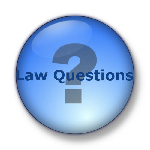First Aid: Allergic Reactions
Before you can learn how to treat an allergic reaction, you need to establish the severity of the allergy. Some allergic reactions are mild, such as skin irritation or congestion, and can easily be treated with over-the-counter medications at home. Other allergic reactions are serious, such as difficulty breathing and life-threatening anaphylaxis, and require immediate medical attention.
Allergic reactions can be caused by a variety of factors. Some of the most common allergens are pollen, pet dander and food, particularly peanuts, shellfish, milk and wheat. People may also experience allergic reactions to medications, insect stings and bites and plants.
First Aid for Allergic Reaction – Mild
Many people have mild, treatable allergies to an assortment of common allergens. These mild allergic reactions manifest as hives, rashes and nasal congestion. Other signs of an allergic reaction include sneezing, watery eyes and runny nose.
If your symptoms include sneezing, runny nose, itchy eyes or a mild skin irritation, you can treat them with an at-home first aid kit. Antihistamines and decongestants are great at relieving congestion and mild breathing problems while skin itching and redness can be treated with corticosteroids and a cool compress.
First Aid of Allergic Reaction – Severe
Most severe allergic reactions appear within seconds or minutes of exposure and for people with a severe allergy, it can often be life-threatening. These serious allergies cause anaphylaxis, which requires a dose of epinephrine to alleviate the symptoms. Symptoms of severe allergies, such as anaphylaxis, include lightheadedness, nausea, weak pulse as well as swelling of the airways. If anaphylaxis is untreated, it can cause loss of consciousness, respiratory problems and cardiac arrest, which can result in death within 15 minutes of exposure.
If this is the first exposure and symptoms of anaphylaxis appear, call 911 immediately and keep an eye on the person’s airway, breathing and circulation. The sooner that the emergency personnel arrive with the epinephrine and administer the dosage, the better the chances of survival.
If the person is aware of this allergy and is accidentally exposed to the allergen, he or she will likely already have the necessary medication on hand to initally treat it, however you must also immediately dial 911. Doctors can prescribe an emergency epinephrine in the form of an EpiPen®, which injects a dose of medication into the patient’s thigh. This dosage will be enough to combat the allergen for 10 to 20 minutes but further treatment and observation is required by medical personnel. Also be sure to inform your family and friends on how to use the medication in the event that you are unable to do so yourself.



